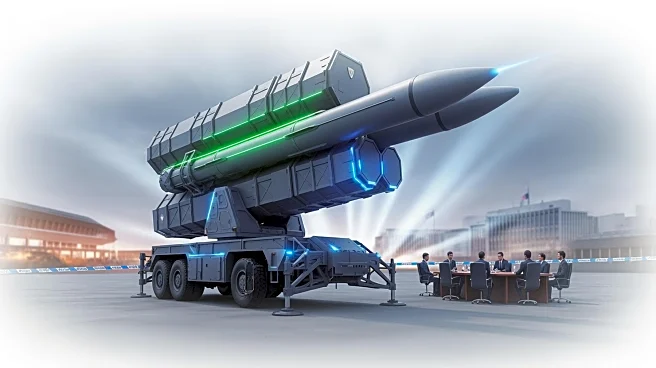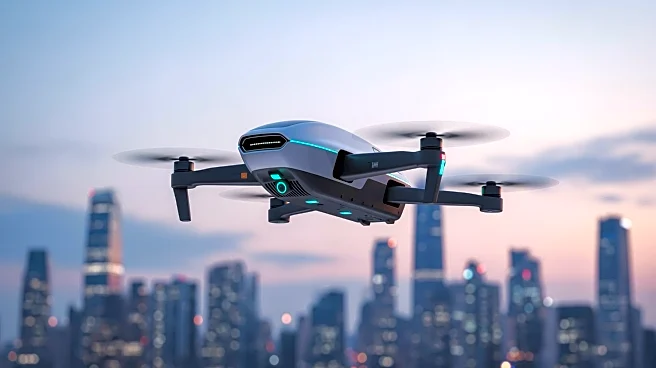What's Happening?
Origin of Latvia and Defsecintel of Estonia conducted a Baltic Drone Wall demonstration at Latvia's Selonia training range on November 5. The event showcased Defsecintel's Eirshield counter-unmanned aircraft
system (C-UAS) and Origin's Blaze autonomous unmanned aerial vehicle (UAV) interceptor. The demonstration involved four near-miss intercepts, illustrating Blaze's ability to abort an intercept at a distance of 20 meters from the target drone and return intact to its launch location. The Blaze UAV, equipped with jam-resistant radar and artificial intelligence, can detect and navigate towards targets without relying on global navigation satellite services. Additionally, a Beak UAV was launched, successfully dropping practice bombs on a target from a height of 60 meters. The demonstration highlighted the advanced capabilities of these systems in detecting and responding to potential UAV threats.
Why It's Important?
The demonstration of the Baltic Drone Wall is significant as it underscores the growing importance of counter-UAV technologies in modern defense strategies. With the increasing use of drones in various sectors, including military operations, the ability to detect and neutralize potential threats is crucial for national security. The successful demonstration of near-miss intercepts and precision bombing capabilities suggests that these systems could play a vital role in protecting critical infrastructure and military assets. The integration of artificial intelligence and advanced radar systems in these UAVs represents a leap forward in autonomous defense technology, potentially influencing future developments in the industry.
What's Next?
Origin plans to begin mass production of Blaze UAV interceptors starting in December, indicating a move towards wider deployment of these systems. As these technologies become more accessible, they may be adopted by various defense forces to enhance their UAV countermeasures. The demonstration may also prompt further research and development in autonomous UAV technologies, potentially leading to more sophisticated systems capable of handling complex threats. Stakeholders in the defense industry will likely monitor these developments closely, considering the implications for military strategy and national security.
Beyond the Headlines
The ethical and legal implications of deploying autonomous UAV interceptors are worth considering. As these systems become more prevalent, questions about accountability and decision-making in automated defense scenarios may arise. The use of artificial intelligence in military applications also raises concerns about the potential for unintended consequences, such as misidentification of targets. These issues may lead to discussions on the need for regulatory frameworks to govern the use of autonomous defense technologies.











